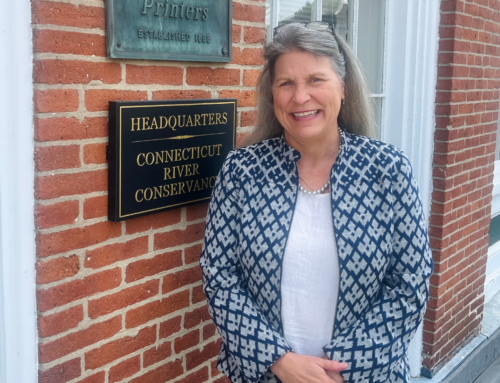For Immediate Release
Saxton’s River, VT, October 12, 2012 – In a refreshingly frank letter sent October 4, 2012 to the members of the 4-state Connecticut River Atlantic Salmon Commission, Entergy actually admits they have been using a flawed thermal model to justify their thermal discharge to the Connecticut River. Entergy in its attempt to deflect criticism of its thermal discharge by the U.S. Fish & Wildlife Service and CRC has now ended up acknowledging that their water quality model used to support their last pollution permit could not describe the sources of heat going into the river.
They note in the letter, “
David Deen, CRC River Steward said “Though we do not buy Entergy’s assertion that it’s the sun, we are surprised and pleased that Entergy has come to agree with us – if a model cannot tell the difference between the sun and thermal pollution it cannot by any stretch of wishful thinking meet the test for proving that Entergy are not causing harm to the river.”
CRC has recently released a new detailed critique of the plant’s thermal discharge that noted that Entergy’s thermal pollution permit is causing actual temperature rise to exceed permitted temperature rise over half the time in the summer and almost three-quarters of the time when fish are migrating through the fish ladder at Vernon Dam.
“Our report shows that when using Entergy’s own temperature data, the river is hotter than what the Vermont Agency of Natural Resources said will not harm fish, and even the agency’s intended limits were too high,” noted Andrew Fisk, Executive Director of CRC. “For Entergy to say that it’s all the sun’s fault and they should get a pass completely misunderstands the Clean Water Act.
The letter attempted to discredit data collected by the US Fish & Wildlife Service, but the USF&W data match that taken by Entergy so by acknowledging that they feel they need to develop a new model in response to that data, Entergy has acknowledged its importance.
According to Laura Murphy of the Environmental and Natural Resources Law Clinic, “If the sun is heating up the water then that reality leaves even less room for Entergy to heat up the river. The Clean Water Act does not give an industry a ‘sun allowance’ when it heats up a water body over natural temperatures. Instead, the Act is very clear – industry must prove that its discharge will assure the protection and propagation of aquatic species and it must take into account ‘all other significant impacts on the species affected.’
“Entergy’s got it completely backwards. They want to take all the thermal pollution they can get, and are attempting to say that the sun light somehow does not count. They want to use a simplistic mathematical formula in their permit to give them a pass. As we have said before Entergy’s permit assumes fish should do math to know if they are safe. Well fish can’t do math, but they do know when they are in hot water,” noted Deen.
See the full letter attached.
For more information on CRC’s studies on Vermont Yankee’s thermal pollution, go to http://ctriver.org/programs/advocacy/thermal_pollution/index.html
-end-
Contacts: David Deen River Steward CRC 802-869-2792 ddeen@ctriver.org
Andrew Fisk Executive Director CRC 413-772-2020X208 afisk@ctriver.org
Laura Murphy Attorney ENRLC at VLS 802-831-1123 lmurphy@vermontlaw.edu







